Thin is In: LED Backlight Units Are Becoming Thinner and Brighter to Meet Consumer-Product Requirements
From mobile phones to LCD TVs, consumer products with LED-backlit displays are demanding ever-smaller form factors with thinner displays, putting the onus on LED-backlight-unit manufacturers to produce slimmer backlights that do more with fewer LEDs. This article explores how to achieve a thinner backlight without sacrificing brightness or uniformity while minimizing the number of LEDs required by the backlight unit.
by David DeAgazio
CONSUMERS are demanding products with smaller form factors, from slimmer smart phones to thinner LCD TVs. As LEDs continue their march to take over LCD backlighting – migrating from handhelds to larger desktop and notebook displays to 52-in. and larger LCD TVs – backlighting units are getting smaller and, especially, thinner, even as the displays they backlight are getting larger.
Complicating the picture are consumers' desires for more features, particularly in mobile phones and handheld organizers. The mobile-phone industry has responded to these demands. Consequently, these new features have not only led to larger display sizes, they have increased the thickness of some of these units to almost 1 in. – well above the 0.6-in. benchmark of sorts established by the Motorola RAZR back in 2004.
So the backlight needs not only to illuminate a larger area overall, but to do so with a slimmer, sleeker profile. And, of course, there can be no sacrifice in performance. High-brightness LED-based backlight units (BLUs) that backlight smart-phone displays and LCDs, keypads, and keyboards in a wide array of consumer products, including the latest-generation laptop and desktop PCs and LCD TVs, would seem to be the order of the day.
Optimum light-extraction efficiency combined with improved light-guide BLU designs maximize the advantages provided by the latest advances in LED technology. That means smaller and thinner LCDs and keypads for smart phones and other handheld devices, as well as thinner laptop and desktop PC LCDs, with ultra-thin keyboard backlighting that provides high luminance and uniformity in virtually any color – all with fewer LEDs, meaning less material required and lower manufacturing costs. Backlight assemblies less than 1 mm thick that utilize light guides as thin as 0.4 mm or less are now a reality (Fig. 1).
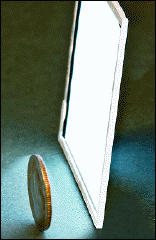
Fig. 1: Backlight assemblies less than 1 mm high that utilize light guides as thin as 0.4 mm or less are now available.
The result is BLUs of extreme thinness. A backlight for a 2.8-in.-diagonal LCD used in a mobile phone today is as thin as 0.4 mm, and getting thinner, with the brightness, efficiency, and cost advantages provided by today's continually evolving and improving LEDs. Proprietary materials, equipment, and processes, including advancements in light-extraction efficiency, are enabling the design of production backlights that are 0.4 mm or less (and 0.3-mm production backlights are close to becoming a reality).
Moving Beyond Handhelds
As mentioned earlier in this article, LEDs are moving well beyond their established turf in the portable/handheld arena and are making deep inroads into the mid-sized LCDs (3.5–7.0 in. on the diagonal) used in a variety of consumer, industrial, and medical displays and also into the larger LCDs used in notebook computers, desktop monitors, and even flat-panel TVs. Today, designers and manufacturers of these devices are leveraging the advantages of LED backlighting more than ever before: wider color gamut, longer life, DC power with no inverter, lower power consumption, greater design flexibility, a smaller form factor, and lower cost. And, of course, the mercury-free construction and longevity of LEDs make them more environmentally friendly. New BLU design approaches such as edge lighting are amplifying these benefits.
For mid-sized (3.5–7.0 in. on the diagonal) LCDs, designers are confronted with a choice of different LED backlighting technologies. The direct-LED-lighting method, as with all LED-backlighting options, eliminates noise and the need for an inverter – which allows the device to run directly from batteries and provides more design flexibility. It employs top-firing surface-mounted non-focused (120° viewing angle) LEDs in a white plastic tray [Fig. 2(a)], with a thick diffuser plate located at 10–20 mm above the LEDs. With this approach, the brightness is very good – direct lighting provides excellent efficiency and the brightest possible backlight because it is not necessary to bend the light (as it is with edge lighting). However, since there is little or no way for this technique to channel the light uniformly, designers need to add more and more LEDs to achieve a thin backlight with good uniformity.
Uniformity at the surface of the backlight is dependent upon the number of LEDs plus the distance of the LEDs from the diffuser plate. The larger the area, the more LEDs are needed. In addition to the diffuser plate, a designer can use diffuser and prism films to maintain uniformity, but will sacrifice thinness.
For an LCD with a viewing area of, for example, 0.62 x 2.5-in., as many as 36 LED chips may be needed. In larger displays, such as those used in LCD TVs, the LEDs needed for direct illumination will number in the thousands – a possibly expensive proposition.
A preferred approach is to use a smaller number of widely spaced high-output LEDs for edge-lit LED backlighting, but the attainment of brightness and uniformity is much more challenging and requires a great deal of optical expertise. Edge lighting employs side-firing LEDs that focus the light into a high-performance light guide. There are several edge-lighting light-extraction technologies: printed, etched (using chemical, laser, or other means), stamped V-groove, and pixel-based (see Table 1).
Printed, chemical, and laser-etched are diffuse light-extraction technologies. Light is scattered in all directions (360°). Brightness is from low to medium for most applications, output angles cannot be controlled, and non-transparent dots block a significant portion of light that is scattered downward from reflecting back through the panel and exiting the top surface. V-groove offers the benefit of high brightness, but is limited in that 2-D uniformity correction (side-to-side uniformity) is not possible. A specular light-extraction technology such as GLT's MicroLens™ provides high brightness and reflects and transmits light from the optical features in a specular manner. With this technology, 2-D uniformity corrections are possible, optical features are transparent, normal reflection and transmission percentages are roughly 60% and 40%, respectively, and the angles at which light is emitted from the light guide can be controlled.
 (a)
(a)  (b)
(b)
Fig. 2: (a) LED arrays are very high in brightness and typically consist of a matrix of LED chips mounted in a white plastic frame on the PC board behind the LCD. In larger displays, such as those used in LCD TVs, the LEDs needed for direct illumination will number in the thousands. (b) Using edge lighting coupled with MicroLens and PhlatLight technologies, a 46-in.-diagonal LCD TV that requires thousands of LEDs using direct lighting with LED arrays can be backlit to the same brightness using eight PhlatLight chipsets, each containing only three LED chips.
Because the LEDs are located on the edge of the light guide, the approach offers benefits that include better optical control (especially for color and uniformity), fewer light-management film layers, fewer LEDs, better repeatability at all levels, reduced power consumption, and the thinnest possible LED backlighting solution.
Examining Edge Lighting
A typical direct illumination technique for a 46-in.-diagonal LCD TV will involve thousands of LEDs, requiring from 2000 to 4000 LEDs to achieve a brightness of 8000 cd/m2 at the surface of the backlight. This technique generally employs lower-power less-expensive LED chips.
One example of an edge-lighting technique employs edge lighting coupled with MicroLens and PhlatLight technologies ("Phlat" refers to photonic lattice chipsets developed by Luminus Devices). With this approach that 46-in. LCD TV can be backlit to the same brightness as above using eight PhlatLight chipsets, each containing three LED chips, or a total of 24 LEDs [see Fig. 2(b)].
Edge lighting requires that the LEDs be positioned on the edge of the light guide rather than behind the entire display. This approach offers benefits that include better optical control, fewer light-management film layers, fewer total LEDs, and the potential for reduced power consumption. With this approach, the backlight thickness can be as thin as 0.4 mm.
One of the key drivers to thinner light guides are the ongoing advancements in LED-fabrication technology, which include continually higher brightness, better color, more efficiency, and smaller sizes. To maintain optimum efficiency, the light-guide thickness should be mated to the height of the LED. As LEDs become smaller and shorter (in height), the thickness of edge-lit light guides will continue to decrease. Edge-lit LED light guides rely on total internal reflection (TIR) to propagate the light down the length of the light guide. However, as light guides become thinner, they become inherently less efficient, especially as the size (area) of the light guide increases. These new thinner light guides must utilize the latest advances in optical light-extraction technology to counter this effect.
One solution to this challenge is the pixel-based optical-light-extraction technique previously referred to (MicroLens) in which light-extraction featrures are directly molded into the top and bottom of the light guide and micro-optical elements efficiently extract light at each pixel. This technique provides precise control over six key variables:
• Depth: Controllable to within ± 2 μm, permitting a high degree of control throughout the panel.
• Shape: The angle of the reflective surface can be chosen to customize the angles that the light rays exit the light guide.
• Density: Can be continuously and precisely varied to maximize brightness and optimize uniformity in two dimensions, enabling the design of 180,000 unique shapes per square inch.
• Randomization: Can be introduced to reduce moiré or other undesirable visual effects and orientation.
• Top Shapes: MicroLens or other light extracting features can be populated on the top (exit) surface of the light guide to maximize brightness as much as 30%.
• Orientation or Angle/Rotation: Light-extraction features can be distributed, arranged, and optimized to work with almost any light source location – even in corners.
This approach provides enhanced brightness (to 15,000 cd/m2 and above), crisp color, extreme thinness, less power consumption, and a smaller form factor with fewer components. It also generates a very tight color consistency because light is "mixed" within the light guide. Industrial designers tend to appreciate the design flexibility that comes with having the LEDs located along one edge of the light guide, and this also enables passive thermal management that can be localized and, therefore, simplified. The key is light-extraction efficiency, and that can translate into higher luminance with same number of LEDs, or the same luminance with fewer LEDs, or the same luminance with the same number of LEDs with lower power consumption.
Table 1: Comparison of edge-lighting methodologies
| Technology |
Efficiency
|
2-D pattern possible
|
| Printed dots |
low
|
yes
|
| Etched dots |
good
|
yes
|
| V-grooves |
very good
|
no
|
| Pixel based |
very good
|
yes
|
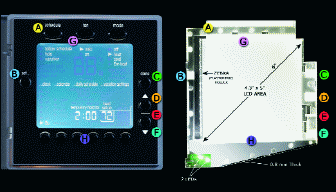
Fig. 3: This light guide lights nine discrete areas of this thermostat: the main LCD area, characters and directional symbols at the top and sides of the unit (A-F), and keypad buttons with "halo" effect at the top and bottom (G and H).
Edge-lit backlighting allows for color mixing within the light guide. This not only minimizes the LED-to-LED deviations, which can be evident in the direct-lighting approach, but also makes edge-lit guides very adaptable to multi-functional displays. The molded light-guide technology makes highly efficient use of white LEDs, so designers can use fewer LEDs and reduce costs.
Selective Backlight Illumination
Edge lighting also allows for selective illumination. Figure 3 illustrates how a two-LED light guide measuring 4.3 in. at its widest point, 4.5 in. at its longest point, and only 0.8 mm thick (or less) can backlight a programmable thermostat with multiple discrete areas requiring illumination. These areas include the main 3.5 x 3-in. (4.6-in. diagonal) LCD area, characters, and directional symbols at the top and sides of the unit, as well as the buttons at the top and bottom – nine discrete areas in all. Illumination can range from straight backlighting of the LCD, characters, and symbols to a "halo" effect around the keypad buttons that is aesthetically appealing and functional.
Optical Modeling with Lens Arrays
A key technique used to enhance uniformity involves lens arrays. Lens arrays are light distribution features that are located on the edge of the light guide (in front of the LED), and they help to provide for a uniform visual appearance using a reduced number of light sources by increasing the angular output distribution of the LED, while minimizing the hot spots that can occur when an LED is too close to the viewing area. The use of lens arrays permits a reduction in the number of LEDs required while still achieving a uniform backlight. This approach enables cost, space, component, and power savings.
In the examples shown in Figs. 4(a) and 4(b), two side-emitting high-brightness LEDs that would best optimize the light coupling to the edge-lit light guide were chosen, then optical modeling using lens arrays was employed to improve the distribution of the light.
A baseline was used to see where the light was going, and LED models were created for the optical ray-trace software. A custom geometry was designed into the tooling of the light guide to better control the spread of the light from the LEDs, and custom optical lens array features were added in front of the LEDs to spread the light more widely than it was in the manufacturer's original design. The lens array (Fig. 5) is positioned at the entrance region on the edge of the light guide.
The shape of these lens arrays can be customized to the application. They are designed to refract the light into a wider output distribution than what would normally be achievable. For example, a typical LED used in edge-lighting applications emits light at a 100–110° distribution angle. Lens arrays can increase this by an additional 10–20°.
PC Displays
Notebook computers are already switching from CCFL backlights to edge lighting with white phosphor LEDs. For this application, designers typically select a blue LED, which is imbued with an amber phosphor to convert the visible wavelength to white. The white LEDs still deliver a percentage of the color spectrum comparable to CCFL (approximately 75%, compared to 70% for CCFLs) while providing lower power consumption. LED-based backlight modules utilizing advanced RGB LED backlight units, each containing three chips with separate red, green, and blue dice in a single package, offer color saturation above 100% NTSC (~140%), exceeding the 70% NTSC color gamut for conventional CCFL backlight modules and allowing unprecedented high-resolution performance and much thinner solutions than traditional CCFL assemblies.
For desktop monitors in many applications, such as advertising, television production, publishing, and industrial design, RGB LEDs are ideal because they can deliver exceptional color accuracy. In addition to providing truer color, today's high-efficiency edge-lit light guides can disperse the light from a single LED over a much wider area. On the downside, RGB LED choices are limited; they are generally more expensive and because more "transition area" is needed to mix the three colors, the use of RGB LEDs can limit the design flexibility of optical designers.
New, thinner LED-based backlights are being designed into notebook and desktop PC keyboards that provide optimal brightness and uniformity along with the ability to utilize fewer LEDs, reducing the cost of the backlight (Fig. 6).
As with the thermostat example cited previously, a key attribute in keyboard and keypad lighting is to selectively illuminate only those areas where light is required, increasing the light output – and brightness – at the precise points, and only at those points, where it is needed.
 (a)
(a) 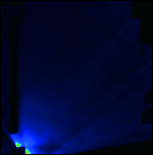 (b)
(b)
Fig. 4: Two side-emitting high-brightness LEDs that would best optimize the light coupling to the edge-lit light guide were chosen, then optical modeling using lens arrays was used to improve the distribution of the light. A custom geometry was designed into the tooling of the light guide to better control the spread of the light from the LEDs, and custom optical lens array features were added in front of the LEDs to spread the light more widely (b) than it was in the manufacturer's original design (a).
LCD TVs
Until recently, edge-lit LED light guides have not had sufficient brightness and efficiency to illuminate large-screen TVs and high-definition displays. One of the newer solutions has been to use the MicroLens light guides in combination with the PhlatLight chipsets to enable the development of an efficient, cost-effective RGB edge-lighting technology with satisfactory brightness and uniformity for large-screen TVs.
Working with Luminus Devices and Jabil Circuit, GLT has developed a 46-in. LCD-TV backlight referred to earlier that consists of eight edge-lit light guides, called "blades." Lens arrays located on the edge of each light guide serve to spread light uniformly, while micro-optical elements efficiently extract light at each pixel.
More recently, a 46-in. "uniblade" backlight has been developed that uses a one-piece ultra-thin light guide only 5 mm thick. This backlight employs 126 RGW LEDs on one side using light-extraction technology, and the total thickness of the backlight assembly is currently only 9 mm. The RGW LEDs are traditional white phosphor LEDs that incorporate an additional red and green phosphor to increase the color gamut to ~ 100% of the NTSC standard. This approach provides extreme brightness of 6000 cd/m2, excellent uniformity of 85%, extreme thinness, and a shorter transition area.
Conclusion
New advances in light-extraction efficiency, coupled with lens arrays and optical modeling techniques, are utilizing the increased brightness of today's high-brightness LEDs to create large-sized edge-lit light-guide BLUs that are growing steadily thinner, requiring the use of fewer LEDs. In this way, manufacturers can meet the increasing demands of today's consumers for ever thinner, brighter, and more feature-packed devices. •
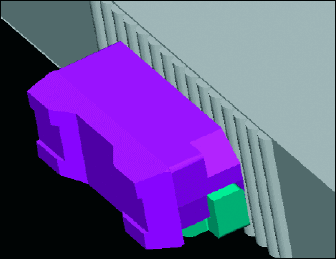
Fig. 5: Lens arrays located on the edge of the light guide serve to spread light uniformly, while micro-optical elements efficiently extract light at each pixel.
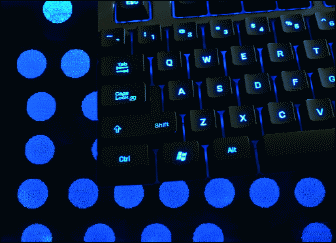
Fig. 6: New, thinner LED-based backlights are being designed for PC keyboards to provide optimal brightness and uniformity along with the ability to utilize fewer LEDs, reducing the cost of the backlight.
David DeAgazio is Director of Sales Worldwide for Global Lighting Technologies, Inc., 55 Andrews Circle, Brecksville, OH 44141; telephone 440/922-4584, e-mail: davidd@glthome.com. GLT was founded in 2000 to develop LED-based edge-lighting technology for the latest generation of flat-panel displays.